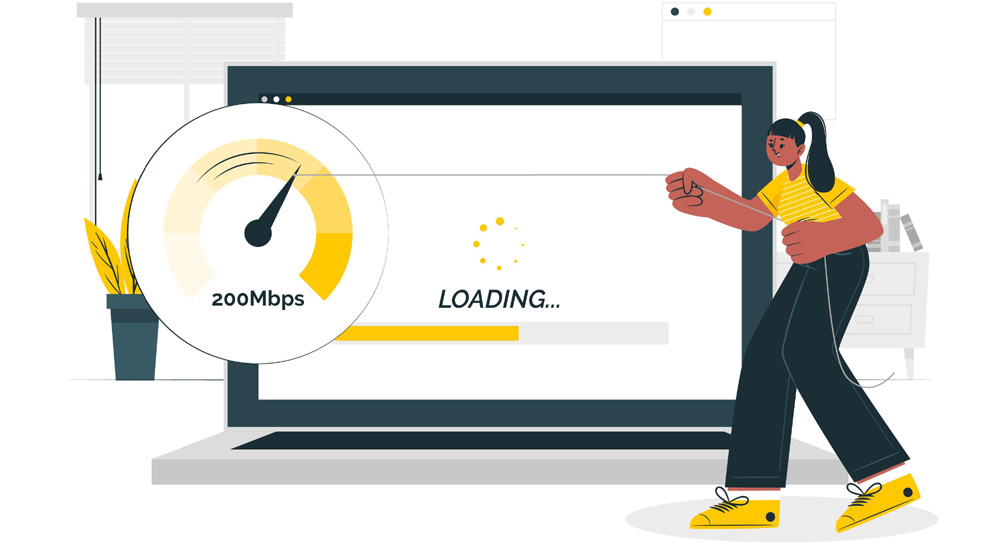Website optimization is a critical factor in digital success. With the web landscape evolving rapidly, businesses must keep pace with innovations in speed and search engine optimization (SEO). In 2025, prioritizing website performance isn’t just about technical superiority but also delivering an exceptional user experience (UX) and aligning with search engine requirements.
In this comprehensive guide, we’ll dive into actionable strategies and best practices for optimizing your website for speed and SEO in 2025.
1. Understanding the Importance of Speed and SEO
Why Website Speed Matters
- User Experience: Slow-loading websites lead to high bounce rates. Studies show that 53% of users abandon a website if it takes more than 3 seconds to load.
- Conversions: Faster websites are more likely to convert visitors into customers.
- SEO Benefits: Google considers page speed as a ranking factor, directly influencing search visibility.
The Role of SEO
- SEO ensures your content reaches the right audience.
- A well-optimized website improves organic traffic, authority, and long-term sustainability.
2. Key Metrics for Website Speed Optimization in 2025
Core Web Vitals
Google’s Core Web Vitals are essential for evaluating website performance:
- Largest Contentful Paint (LCP): Measures loading performance. Aim for less than 2.5 seconds.
- First Input Delay (FID): Measures interactivity. Aim for under 100 milliseconds.
- Cumulative Layout Shift (CLS): Measures visual stability. Aim for a score below 0.1.
Other Critical Metrics
- Time to First Byte (TTFB): The time it takes for a user’s browser to receive the first byte of data.
- Page Size: Keep your pages lightweight for faster loading.
- Requests Per Page: Minimize HTTP requests.
3. Speed Optimization Strategies for 2025
1. Implementing Modern Web Technologies
- HTTP/3: Upgrade to HTTP/3 for faster and more secure connections.
- CDNs (Content Delivery Networks): Distribute content globally to reduce latency.
- Image Formats: Use next-gen formats like WebP and AVIF for faster image delivery.
2. Code Optimization
- Minification: Compress CSS, JavaScript, and HTML files.
- Asynchronous Loading: Load non-critical resources asynchronously to prioritize visible content.
- Lazy Loading: Defer loading images and videos until they are in the user’s viewport.
3. Server Optimization
- Hosting: Choose high-performance hosting providers with SSDs and optimized configurations.
- Caching: Implement server-side and browser caching to reduce load times.
- Database Optimization: Regularly clean and optimize your database for better performance.
4. Mobile Optimization
- Ensure your website is mobile-first, as mobile traffic continues to dominate.
- Use AMP (Accelerated Mobile Pages) for faster mobile experiences.
4. Advanced SEO Strategies for 2025
1. Content Optimization
- Keyword Research: Focus on long-tail keywords with AI-based tools.
- Semantic SEO: Write content that answers user intent and queries comprehensively.
- Rich Snippets: Implement structured data for featured results on SERPs.
2. Technical SEO
- URL Structure: Ensure clean, readable URLs with keywords.
- XML Sitemaps: Keep sitemaps updated and error-free.
- Canonical Tags: Avoid duplicate content issues.
3. Mobile-First Indexing
- Ensure your mobile website offers the same content as your desktop version.
- Test usability with Google’s Mobile-Friendly Test tool.
4. Voice Search Optimization
- Focus on conversational keywords and question-based queries.
- Use structured data to appear in voice results.
5. Local SEO
- Optimize for local searches by claiming your Google My Business profile.
- Use location-based keywords and ensure NAP (Name, Address, Phone) consistency.
5. Tools for Website Optimization in 2025
Website Speed Tools
- Google PageSpeed Insights: Evaluate and get recommendations to improve speed.
- GTmetrix: Comprehensive speed and performance analysis.
- WebPageTest: Detailed loading insights and waterfall charts.
SEO Tools
- Ahrefs: Analyze backlinks, keywords, and competitors.
- SEMrush: Comprehensive SEO and marketing insights.
- Screaming Frog: Identify technical SEO issues.
6. Case Studies of Successful Website Optimization
Case Study 1: eCommerce Website Speed Boost
- Challenge: High bounce rate due to slow load times.
- Solution: Implemented lazy loading, CDN, and image optimization.
- Result: Reduced load time by 50%, increased sales by 30%.
Case Study 2: SEO Revamp for a Blog
- Challenge: Declining organic traffic.
- Solution: Focused on semantic SEO, optimized for Core Web Vitals, and improved internal linking.
- Result: 45% increase in organic traffic within 3 months.
7. Future Trends in Website Optimization
AI and Machine Learning
- Predict user intent for personalized experiences.
- Automate SEO tasks like meta tag creation and keyword optimization.
Green Hosting
- Sustainable hosting solutions to reduce the carbon footprint of websites.
Web3 and Decentralized Hosting
- Emerging technologies like IPFS for secure and faster delivery.
Conclusion
Website optimization for speed and SEO in 2025 is a blend of technical precision and user-centric strategies. By aligning with Core Web Vitals, leveraging advanced tools, and staying ahead of trends, you can ensure your website ranks high and provides a seamless experience. Invest in these strategies today to secure your digital success tomorrow.

